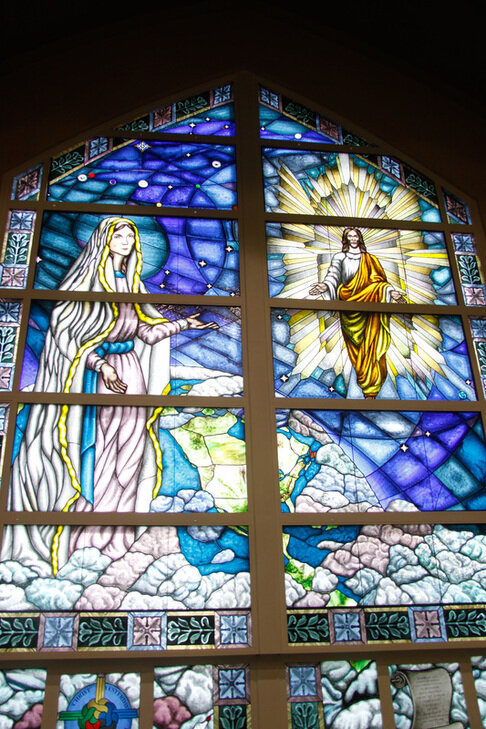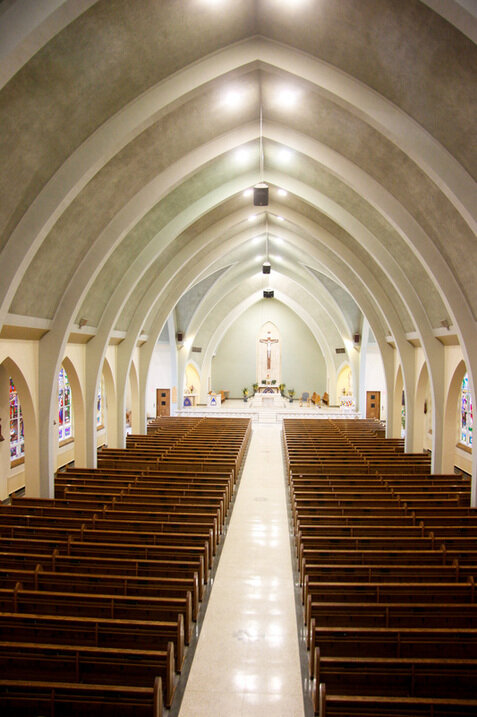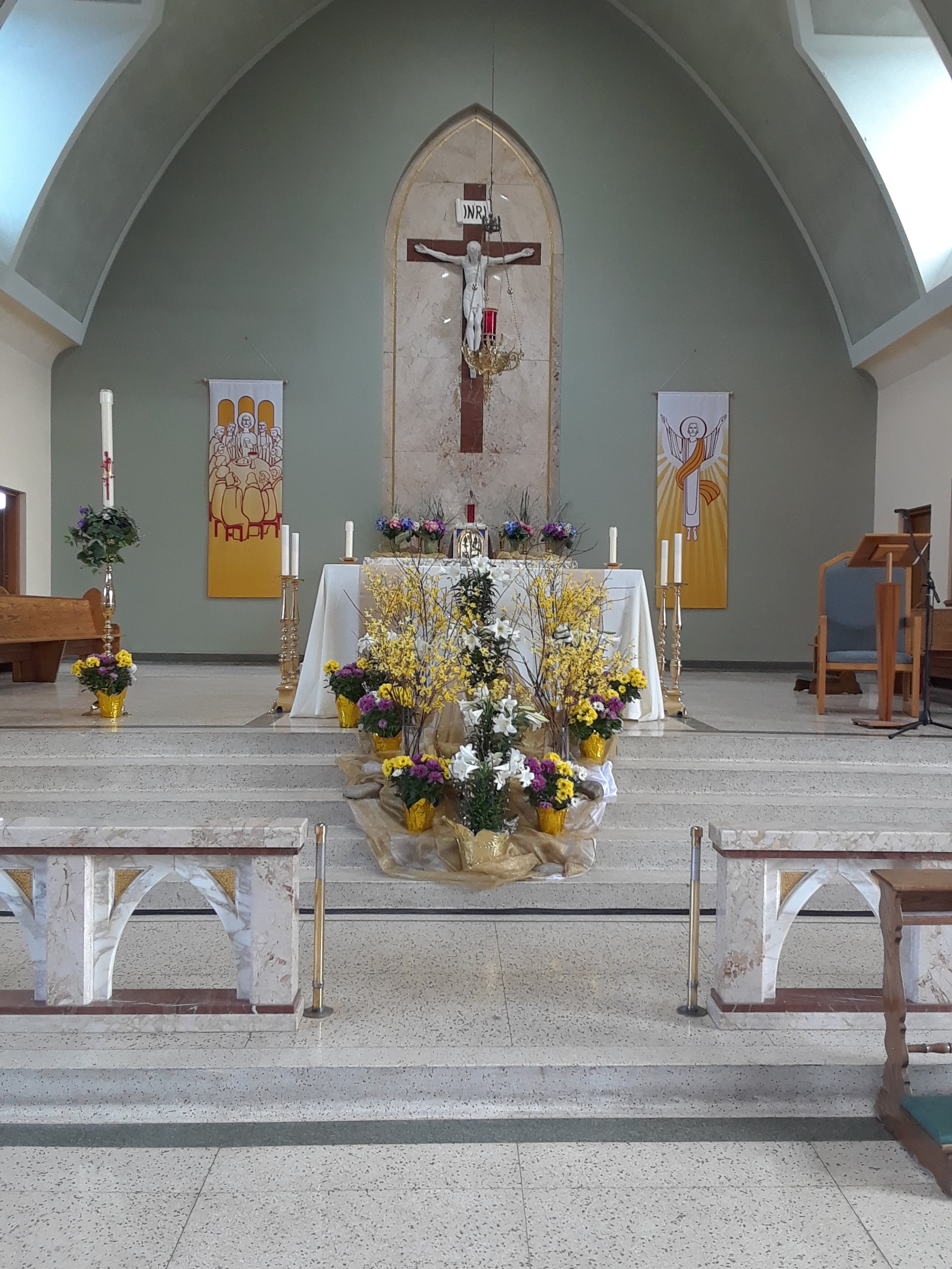Saint Mary’s Church
ADDRESS:
360 Newcastle Blvd, Miramichi, NB E1V 2J9
Tel: (506) 622-5720
For weekday and holiday Mass times please click on the bulletin links.
History of St. Mary’s
St. Mary’s was founded in 1862. After years of immigration into this area, a need was seen to build a church. Before this, the Catholic people of the area had been ministered to by priests at Bartibog and Nelson.
The first church was built on Prince William St. (Now Newcastle Blvd.) between the area of today’s railway tracks and the former rectory and had a capacity of 450. This church served the congregation adequately until the 1930’s and 40’s when population growth made a larger church necessary. During the Pastorate of Rev. Raymond Hickey (1954-63) the new St. Mary’s building was erected, blessed and opened on December 4, 1956.
This church was built to accommodate 1300 people and could look after the approximate 1000 families in the parish. The basement of the church contained an auditorium to seat 800. It also had kitchen facilities, classrooms and meeting rooms.
St. Mary’s Church could be described as a handsome edifice in Neo-Gothic style, of locally quarried stone. The interior woodwork, pews and 8 doors are of oak and windows of coloured glass except for four windows of stained glass donated by parishioners. Since 1956 additional stain glass windows have been purchased as well as a magnificent window dedicated to the Virgin Mary that was installed as a millennium project in 2000. This window overlooks the choir loft and main entrance.
St. Mary’s Parish was part of the Diocese of Bathurst for the first 3 years after construction of the new building, but in 1959 the English speaking churches of the Miramichi were transferred from that diocese to the Diocese of Saint John.
No history of St. Mary’s could be complete without mentioning the two mission churches, that of St. Joachim’s in the First Nation of Eel Ground and St. Theresa’s in Bridgetown in the west end of the city. This church was sold to the adjoining pulp and paper company and later torn down.





